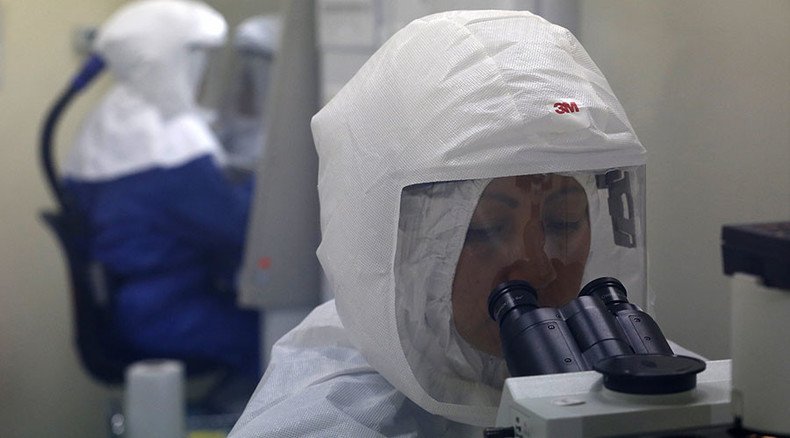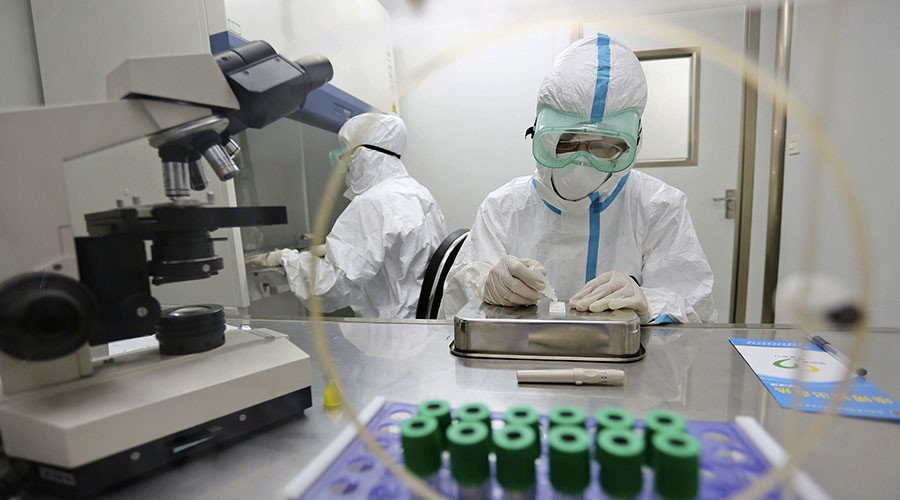New deadly genetic disease in Russia's Yakutia: Kids don’t live to 3yo

Fourteen children in Yakutia have died of a previously-unknown disease caused by mutations in multiple genes. The illness kills kids before they turn three as it progresses rapidly and there's no cure so far, according to the scientist who discovered it.
In total 16 children have been diagnosed with the genetic illness, says Nadezhda Maksimova, head of a Yakutsk laboratory at the North-Eastern Federal University who discovered the deadly disease.
"We are currently studying a new, very severe disease which causes irreversible metabolic disorders in children who don't survive beyond three years of age. Of the 16 patients that we have found, only two are left alive," she told Ogonyok magazine.
To study the decease, one of the surviving tots is to be sent to Japan, with parents having launched a fundraising campaign.
Scientists apply for license to modify human embryos http://t.co/2Y5ZwE699Qpic.twitter.com/3hSaOb1nLP
— RT (@RT_com) September 19, 2015Sending blood samples to a Moscow laboratory for analysis is a real challenge, Maksimova said. Samples have to be carried very carefully in a vacuum container that needs to be protected from shaking so as not to destroy the enzymes. And since Russian laws prohibit the sending of samples for analysis abroad, it is easier to send the patient instead.
“We have carried out the whole genome sequencing at the University of Osaka and found specific mutations in the gene. I think this is a big step forward to the [creation] of treatment,” Maksimova told the Russian magazine.
In fact, it's the third genetic disease discovered by the prominent Russian genetic scientist. In 2005 and 2010 she identified two other deadly disorders – the SOPH syndrome, which damages children's optic nerves so badly they eventually become blind, and the so-called “Yakut short stature syndrome” (the 3-М syndrome), which causes severe growth retardation, dysmorphic features and skeletal changes in the newborns.
To come up with the diagnosis of a genetic disease is harder than it sounds, with scientists spending years on clinical and scientific studies.
READ MORE: New ‘mega virus’: Is it dangerous for humans?
“Our discoveries were preceded by nearly 25 years of medical and genetic counseling, with expeditions sent to the regions. Genetics first visited Yakut villages with other doctors before they began to come by independently. We examined people with hereditary diseases at the site and invited them to come along with their families for further examination in town. All this has provided the basis for further research,” Maksimova says.
“Then, during the second stage, scientists need to sequence the genome of a patient, and – ideally – to find the gene responsible for this or that 'failure’. But this is only possible in case when one gene is responsible for the disease. As a rule, it's not so simple, however.”
There are over 6,000 known genetic disorders in the world. According to Maksimova, there's currently treatment for only about 10 or 15 of them. But contrary to popular belief, not only close relatives usually fall prey to genetic diseases.

“We've discovered pathologies in people from completely different, unrelated families. Imagine, people are different, while markers in their blood are one and the same. In this case, genetic scientists speak of a special 'founder effect.' In simple words, a long time ago there lived a man who had developed a mutation – he had a number of children, who help spread the defect. Today other people are the carriers of this gene and, as a rule, they do not even know about it.”
For the disease to become evident, one such carrier has to meet another person with the same hidden mutation and then give birth to a baby. To trigger the “founder effect” process, two people with one and the same broken gene have to meet up, Maksimova explained.
Maksimova says though there are a number of reasons that trigger genetic disorders, the DNA analysis can only help understand when a particular mutation emerged, but not what caused it.
“The genome of any totally healthy person can contain some five to 10 hidden mutations. So basically no one is exempt from the possibility to bear an unhealthy child. This is a kind of lottery hosted by the nature,” she concluded.












